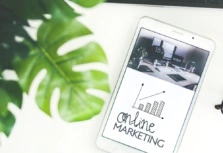Social media campaigns are the centerpiece of any serious marketing strategy (if they’re not, then they should be).
Achieving optimal results without using the power of social channels is almost unimaginable in the digital age.
But what makes a great social campaign?
- It should be coordinated and focused on achieving a specific goal over a set period of time,
- It can be done using one or several platforms,
- The campaign should have trackable and measurable outcomes.
In this article, we’ll be covering the process of developing an effective social media campaign step by step. We will also take a look at 20 first-rate social media campaign examples from the recent and not-so-recent past. These examples will show the strategies we have discussed in action and (hopefully) provide some inspiration for your own future ventures.
We’ve got lots to talk about, so let’s dig in!
How to make a killer social media campaign
Step 1: Set goals aligned with your business objectives
Setting goals is the first step, and it’s super important. You can design the most creative, exciting social campaign ever. But if it doesn’t meet the real business goals of your e-commerce store, you’ll have wasted your time.
So, ask yourself what your business really needs at this point: more traffic, more conversions, increased customer loyalty, higher average order value, or something else.
Once you have your overall objective, it’s time to get smart. In fact, you’re going to get S.M.A.R.T, which stands for:
- Specific
- Measurable
- Attainable
- Relevant
- Time-bound
That’s because the goals for your social media campaign need to be all of these things. Keeping this acronym top of mind will help you stay focused during the goal-setting stage.
Your aim should be to set a S.M.A.R.T. goal for your campaign so that you can accurately measure its success. Here’s an example of a S.M.A.R.T campaign goal:
“We will use Facebook Ads to drive 1,000 unique users to our landing page within the next 6 months”.
- It’s specific. It clearly states what you will achieve (unique users to our landing page) and how you will achieve it (Facebook ads).
- It’s measurable. You can judge if you get 1,000 unique users or not.
- It’s attainable. This is a realistic target for an early stage e-commerce store.
- It’s relevant. If your overall objective is to boost traffic, this is a relevant goal to set.
- It’s time-bound. There is a clear time frame set out for achieving this (6 months).
In terms of the metrics you choose to track, these will depend on the platform and social media campaign goals. But you should always avoid getting hung up on “vanity” metrics like the number of likes. Instead, focus on metrics like click-through rate, engagement, conversion rate, or cost-per-click.
For instance, if you’re using Facebook ads to sell a product, cost-per-click will be the clearest indicator of success. If, on the other hand, you’re aiming to drive leads and sales, you should probably pay more attention to email sign-ups, website clicks, and conversion rate.
Step 2: Get to know your target audience
Social media campaign targeting requires extensive knowledge of your target audience.
The first step is to do some free-form exploration, getting to know your customers as real people with real needs and desires. Try to answer these questions:
- What drives their activities online?
- What would they like to see more of on social media?
In addition, you should build a basic target audience profile, disaggregated by age, sex, income bracket, location, etc. This will require learning to use social media analytics tools, which is much less difficult than it may sound. Here’s a solid guide to analytics by Social Bakers to get you started.
Another thing to keep in mind is that you should never assume anything. Instead, do your research. For example, some Gen Z’ers would have you believe that Facebook is only home to a crowd of “boomers” and aging millennials. In fact, it remains the most popular social media platform in the world.
Step 3: Research your competition and seek inspiration
First, you’ll have to identify your competitors. A good way to do this is by analyzing your website with the Google Ads Keyword Planner, which will give you tons of data on top keywords associated with your industry, including search volume and competition.
Next, pick a handful of keywords and type them into Google to get a basic picture of who you’ll be competing against. Then do the same for relevant social media platforms – brands that rank for your keywords in Google don’t necessarily do so on socials.
You can also use Facebook Audience Insights and/or Twitter Analytics to find out which other brands your target audience follows and identify the ones relevant to your industry.
Once you’ve got a decent list of competitors, scour their social media accounts and gather as much information as you can - check out this guide to spying on your competitors’ social media activities to learn how.
It’s usually best to look for where your audience is underserved rather than attempt to win them over from competitors. For example, some brands may have a strong presence on Facebook, but not on Instagram.
Step 4: Set up a social media posting calendar
To get the most out of your social media campaign, set up a posting calendar. This calendar should specify
- which types of content you’ll be using,
- and when it should be posted, and on which platform.
The calendar should cover the entire duration of your campaign.
In addition, you might want to include things like a regular social media campaign overview and targeted employee advocacy posts to boost the overall visibility and impact of your campaign.
Having a schedule brings some much needed clarity to everyday operations and boosts productivity because you always know what should be done when, where, and on which social media channel.
As for which types of content to use, that will obviously depend on the specifics of your social media campaign. Generally speaking, though, you might want to consider either of these strategies:
- The rule of thirds. This is where one-third of the content promotes your business directly, one-third promotes ideas of industry thought leaders, and one-third consists of direct interactions with your audience
- The 80/20 rule. This is where 80% of your content is dedicated to providing value to your followers (education, how-to videos, entertainment, etc.), and 20% is focused on promoting your products/services.
Step 5: Track performance and adjust
Once you have launched your social media campaign, keep a close eye on it. You’ll notice that some elements aren’t engaging your audience, while others are working better than expected – this is completely normal. Getting a social media campaign to work well usually takes some time, effort and fine-tuning.
The most important thing is that you track progress and adjust the campaign accordingly. This is best done using analytics tools native to whichever platform(s) your social media campaign relies on. In other words, use Facebook’s tools for tracking your ads on Facebook, and so on.
Which metrics to track will depend on your campaign goals.
- For example, if you’re trying to drive more traffic to your website, you should probably be tracking click-throughs.
- On the other hand, if you’re advertising on Facebook, cost-per-click will likely be the most meaningful indicator of success.
A big advantage of collecting data about your social media campaign is that it gives you the ability to adjust things in real time, which takes out much of the guesswork that would otherwise be necessary.
Furthermore, having lots of campaign data might give you some idea about what you should focus on for your future campaigns.
20 social media campaign examples
We’ve been through the steps to follow when creating your social media campaign. Now it’s inspiration time. Let’s take a look at 20 creative, clever and super effective social media campaigns.
1. Procter & Gamble: DistanceDance
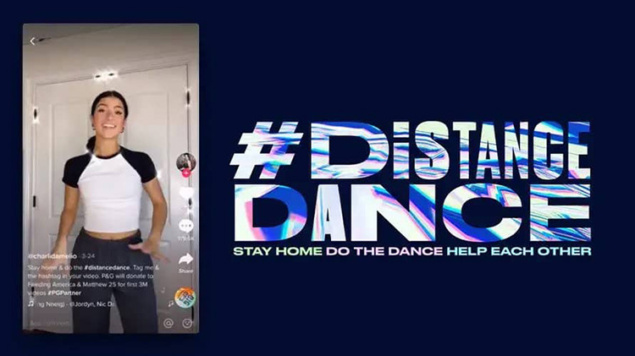
With the COVID-19 pandemic still raging around the world, the consumer goods company Procter & Gamble teamed up with the TikTok star Charli D’Amelio to launch a social media campaign encouraging people to keep a safe distance while having fun at the same time.
The idea was a simple one – people were asked to record a short video of themselves dancing and post it on TikTok with the hashtag #DistanceDance. For its part, P&G committed to donate to Feeding America, and the international humanitarian aid and disaster relief organization Matthew 25: Ministries for each and every one of the first 3 million videos.
What’s great about it? The campaign was effective. The hashtag generated a total of 17.8 billion views during its run. It worked because it not only gave people an opportunity to express themselves creatively, but also made them feel a part of a worthy cause.
2. Zoom: Virtual background contest
In mid-2020, as more and more people started working from home, video conferencing software like Zoom became a part of everyday life.
Without missing a beat, Zoom Video Communications – the company behind the Zoom software package – launched an excellent social media campaign to raise brand awareness and get more people to try a free trial version of the program.
The campaign had people sending in their pictures and videos made using Zoom’s virtual background feature. It awarded 3 finalists with branded items every month for the duration of the campaign.
What’s great about it? The virtual background feature provides ample opportunity for fun and creative images. And the fact that participants weren’t required to purchase the full version of Zoom made it all the more enticing and more likely to convert.
3. Planters: #RIPeanut
Mr. Peanut was a fictional character drawn by grade schooler Antonio Gentile in 1916 during a logo design contest held by snack food company Planters. The company became best known for its processed nuts and, the wacky adventures of Mr. Peanut.
In 2020, the company decided to lay their mascot to rest. Mike Pierantozzi, director of Planters’ agency VaynerMedia, came up with the idea of sending Mr. Peanut off in a similar way to Iron Man in Avengers: Endgame.
“When Iron Man died, we saw an incredible reaction on Twitter and on social media […] What would happen and how would the world react if he [Mr. Peanut] passed away?” Pierantozzi explained in an interview.
The result was a Super Bowl video ad that sent off the beloved mascot in a blaze of glory (over 7 million views on YouTube). The ad was accompanied by a Tweet commemorating the 104-year-old peanut’s tragic demise with the hashtag #RIPeanut, which was used 1.5 million times across social media platforms, and re-tweeted another 50,000.
What’s great about it? Planters managed to pull off quite an impressive stunt, capitalizing on the social media buzz around the death of a beloved character, and opening up some extra space for new ideas and new adventures.
4. Netflix: Wanna Talk about It?
In late 2020, Netflix – working with 150 organizations from 45 countries – launched an affiliated website called wannatalkaboutit.com. The site provides information, videos, downloadable guides, and a non-profit helpline for people struggling with mental health issues.
Months before, the company had launched a series of Instagram Live events. In these events, actors from popular young adult Netflix series (13 Reasons Why, Stranger Things, The Kissing Booth, and others) talked to mental health experts. They discussed the challenges young people face during the pandemic, and replied to questions from the audience at home.
What’s great about it: This unique way of engaging with its target audience and providing genuine help made it possible for Netflix to build up quite a bit of brand loyalty. This loyalty is likely to last much longer than the pandemic itself.
5. Airbnb
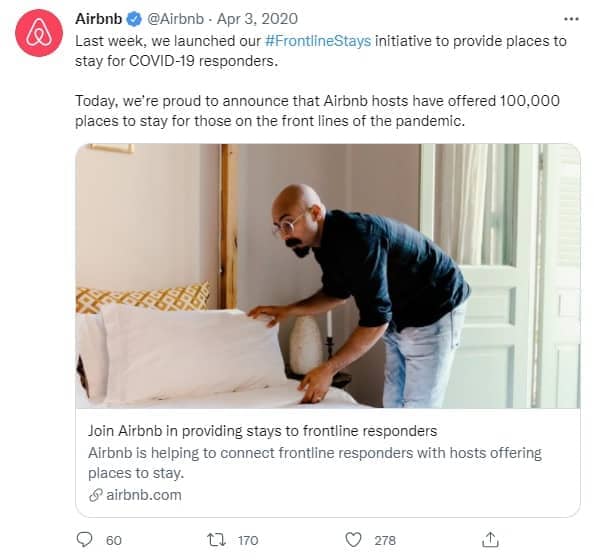
Despite being among the hardest hit companies during the pandemic, Airbnb managed to find a way to solidify its brand, stay active on social media, and lend a hand to those who were helping others.
Following a couple of trial runs in Italy and France, the company set a goal for itself to provide free or subsidized housing for 100,000 COVID-19 responders around the world. The campaign was a resounding success. Thousands of willing participants volunteering their real estate to a worthy cause.
“Medical workers and first responders are providing lifesaving support during the coronavirus outbreak and we want to help,” co-founder Joe Gebbia said in a press release. “We’ve heard from countless hosts around the world who want to provide a comforting home to heroic first responders. We are connecting our non-profit partners, government agencies and others with our incredible host community to work together in these extraordinary times.”
What’s great about it: This campaign is a perfect example of the importance of social media – especially when your business is temporarily down and tensions are running high. No better time to hone your social media skills and maintain (or even increase) your relevance.
6. Houseparty – Fortnite Trivia Challenge

With millions of people around the world stuck at home during the pandemic, entertainment and virtual communication became paramount. To make the best of a bad situation, Houseparty – a group video chat platform – came together with Fortnite and launched a massively successful trivia challenge.
The goal: 20 million right answers (achieved collectively).
The reward: a special reward (the Fryangles Wrap) unlocked in Fortnite.
To be eligible for the challenge, users were required to download the Houseparty app, and have a Fortnite account. Once the goal was reached, the reward was unlocked to all players, including those who did not take part in the challenge.
What’s great about it? Collaboration with other brands can give your brand a big boost. In this case, Houseparty got a bunch of attention from players, while Fortnite gained access to Houseparty’s user base – win-win!
7. Apple: #ShotOniPhone

Apple’s brand is aimed primarily at the urban middle class. It emphasizes innovation, creativity, and freedom enhanced by modern technology. With this in mind, the company’s #ShotOniPhone social media campaign made perfect sense.
In 2015, Apple asked users to send pictures shot on the iPhone, and then plastered them on 10,000 billboards around the world.
Two years later, to keep the momentum going, the company opened an official account on Instagram and encouraged followers to tag their pictures with #ShotOniPhone. The campaign is on-going, and the hashtag currently has over 22 million associated posts!
What’s great about it? Apple found a clever way to advertise a product without showing it. More than that, ever since 2017 advertising the new iPhone has been mostly organic, relying on user-generated content which the company doesn’t have to pay a dime for.
8. Coors Light: #CouldUseABeer
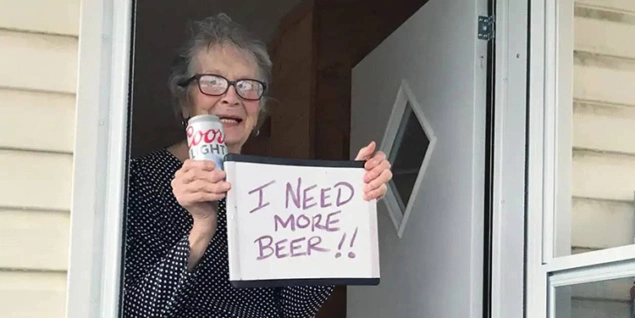
“Let’s face it – right now America #CouldUseABeer” was the slogan of a 2020 social media campaign by Coors Light. One of the main reasons why it worked as well as it did was the fact that many Americans were desperately looking for some positivity amid a deadly pandemic.
The campaign offered to reimburse anyone who had purchased a six-pack of Coors Light and used the hashtag in a pinned Tweet by indicating who in their lives could use a beer right now. The campaign ran until the company “gave away” a total of 500,000 beers!
Several weeks before #CouldUseABeer was launched, Coors Light delivered 150 beers to a locked-down 93-year-old Olive Veronesi who wrote “I need more beer!” on a whiteboard and held it to her window.
Encouraged by the positive response (and no doubt noticing the rise in sales of alcohol during COVID) the company decided to turn the one-off adventure into a full-blown social media campaign, which paid off beautifully!
What’s great about it? Bringing levity to a tough situation, and showing some generosity can go a long way to promoting your brand.
9. Chattanooga Bakery: MoonPie to the Moon
Chattanooga Bakery, mostly known for the MoonPie snack that’s popular across much of the United States, has been interested in space exploration (and especially the Moon) ever since the sweet was created back in 1917.
The company’s obsession with space came to a head in 2019 when it set itself the goal to become the first brand on the Moon, which seems to fit NASA’s stance on the commercialization of space in the near-to-mid future.
For this purpose, the company set up a petition on Change.org to generate public support for a MoonPie being sent to space during NASA’s planned 2024 Artemis mission, which is intended to bring humans back to the Moon.
At first, the company aimed to get 1,000 signatures, and is now shooting for 5,000 (currently at 4,251). Since the campaign was endorsed by the NASA administrator Jim Bridenstine, who Tweeted “I’m all in!”, it might actually work!
What’s great about it? It stand out from the crowd with boldness and creative use of brand name.
10. Starbucks: WhatsYourName
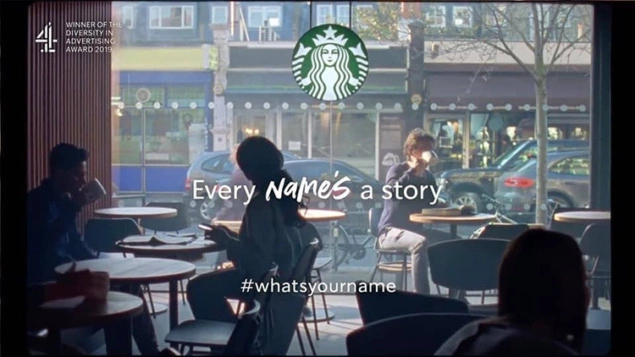
Starbucks has always been a mission-driven company, and the campaign it started in February 2020 is a case in point.
Inspired by, and showing solidarity with, LBTQ+ youth, the company encouraged people to create online content with the hashtag #WhatsYourName, and then shared it across its social media channels.
User-generated content usually has significantly higher engagement rates, which is great for raising brand awareness and increasing organic reach.
What’s great about it? Campaigns aligned with a brand’s mission and reliant on user-generated content enhance the brand’s perceived authenticity. This is hugely important considering customers are becoming increasingly wary of superficial content.
11. Spotify: #Wrapped
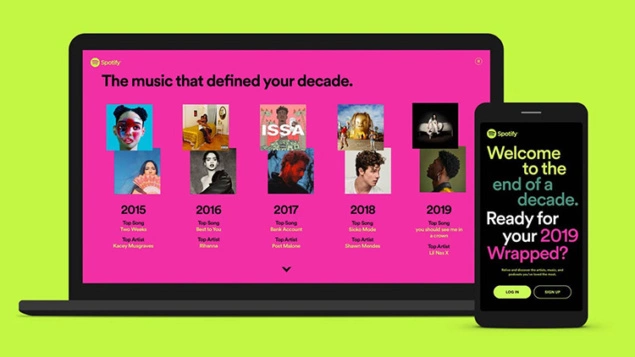
Spotify’s multi-year and multi-channel Wrapped social media campaign sought to celebrate the platform’s users. It brings a human touch to the brand and emphasizes the importance of music in people’s lives.
Three of the key pillars were providing users with personalized listening data from last year, and making humorous billboards and social media posts based on current music trends and mock playlists.
All three elements were elegantly designed to feed off each other – user data was used for advertising, which drew them back to the Spotify website and/or app, where they received more data.
Seeing friends - as well as famous artists - showcasing their musical journey on social media, tons of people subscribed to the app just to join in the fun!
What’s great about it? Using large amounts of user data and user-generated content to humanise a brand and gain new customers.
12. Pringles: #PlayWithPringles
Cooped up at home with nothing to do thanks to COVID, young creators have been churning out tons of creative and/or goofy content on TikTok. This includes various dances and comedy routines featuring the iconic Pringles cans.
Sensing an opportunity, the company jumped in with a series of challenges available in Germany, Italy, and France.
The social media campaign was a success, attracting a huge number of digital natives – exactly the target audience Pringles was aiming at. All in all, it generated an astounding 278M+ video views from over 343K user-generated entries, and went on to amass more than 1 billion page views!
In addition, #PlayWithPringles achieved an incredibly impressive 13% engagement rate, which certainly bodes well for the company’s future efforts on the platform.
What’s great about it? Leveraging community engagement and user-generated content to reach out to the never-not-online Gen Z’ers.
13. Casper: Sleep Channel
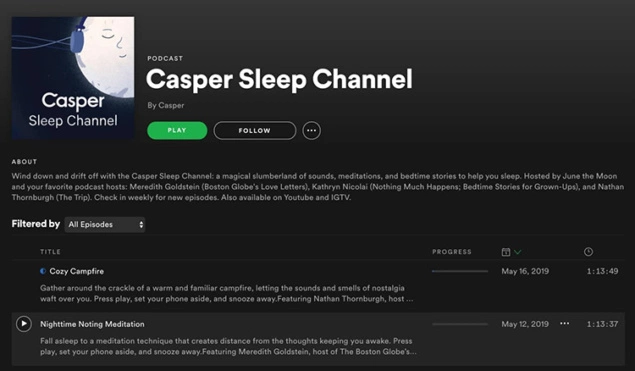
There are plenty of brands that use playlists and podcasts to promote their products. But there are many fewer who create original, highly specialized content that brings real value to their customers.
Casper’s Sleep Channel – available on IGTV, YouTube, and Spotify – features an animated host called June the Moon. June introduces segments filled with sleep-inducing sounds, meditations, and even bedtime stories.
Created by Stink Studio, the playlist is more than 225 minutes long and never mentions the brand even once!
What’s great about it? Creating valuable content that competitors haven’t and doing something different, which most successful social media campaigns share.
14. Hello BC: #ExploreBCLater
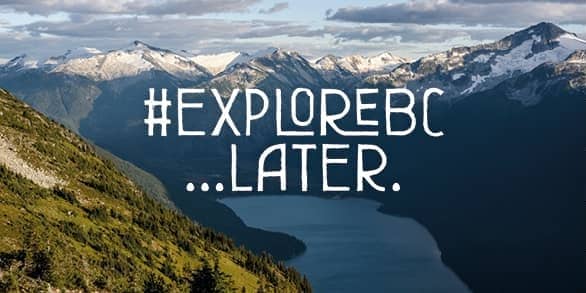
With tourism reduced to a trickle during the pandemic, advertising holiday destinations and guided tours is pretty much out of the question. And yet, even this situation doesn’t have to necessarily lead to complacency.
The provincial tourism authority Hello BC decided to face the facts and ask people to stay at home, while building on its previous social media campaign #ExploreBC. Except this time vacationers were encouraged to #ExploreBCLater.
In addition to content provided by industry partners, Hello BC solicited images and videos from past trips around the province, offering vicarious journeys to its followers and keeping the travel bug alive during lockdown.
The campaign was also a godsend for travel bloggers who got a chance to slap a trending hashtag on their existing content and get some extra play out of old posts.
What’s great about it? Assuming leadership in the promotion of social responsibility, while simultaneously keeping the brand afloat and relevant by leveraging user-generated content to maintain enthusiasm for the future resumption of services.
15. Friskies and Buzzfeed: Dear Kitten
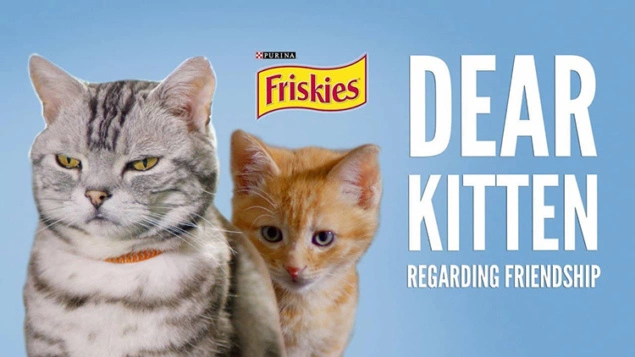
Ever since cats became the mascot of the internet, there’s been no shortage of humorous cat-related content online. The Dear Kitten social media campaign, developed in collaboration with Buzzfeed, is no different.
What is different, however, is the quality of the writing and the sheer number of laugh-out-loud moments. The campaign spawned a series of viral videos where an older cat imparts some worldly wisdom to a little kitten, each episode dealing with a different topic: friendship, dogs … you get the idea.
The food is featured organically, and only towards the end, which helps to keep people’s attention and not to overwhelm them with heavy-handed brand messaging.
What’s great about it? Cats + humor = success!
16. Dove: #ShowUs
Dove has been making exemplary social media campaigns for the past two decades, focusing on natural beauty, inclusivity, and acceptance of bodily differences.
Upon discovering that as many as 70% of women feel underrepresented in media and advertising, the company doubled down on its corporate mission and created a massive campaign to celebrate human diversity.
Partnering with Girlgaze, Getty Images, and thousands of women and non-binary individuals around the world, the campaign aimed to amass 10,000+ images showcasing natural beauty without the help of Photoshop or artificial stages or scenarios.
In a world of constant novelty and change, the campaign has managed to secure impressive staying power and become a real sensation online.
What’s great about it? Encouraging authenticity and leveraging user-generated content.
17. WWF: #EndangeredEmoji
The campaign – launched in 2016 on the Endangered Species Day (May 19) – was inspired by the discovery that 17 of the emojis listed in the emoji alphabet represent endangered species.
For each retweet of an emoji Twitter users were encouraged to donate at least $0.10 to the WWF charity.
“When it comes to fundraising, giving people a simple way to donate is key. By using one of the world’s biggest social platforms to highlight endangered species, we’re hoping to raise vital funds for their conservation as well as raising awareness globally,” said Adrian Cockle, Digital Innovation Manager at WWF International.
The result was more than 1 million Tweets with the social media campaign hashtag, 200,000 new followers, and 59,000 donations… and that’s just in the first two months!
What’s great about it? The campaign’s success was secured by taking advantage of the popularity of emojis, the ease of donation, the low suggested donation amount, and the exposure provided by participating celebrities like Jared Leto and Richard Branson.
18. Ex Machina

The promotional social media campaign for the sci-fi thriller Ex Machina that was slated for a screening in the SXSW festival back in 2015 was a real gem of advertising and a conceptual marvel.
To promote the film, a Tinder profile of a young woman named Ava was promoted to users whose data indicated their upcoming participation in the festival.
When a user started a chat with Ava, she would start asking all kinds of deep, philosophical questions. They were questions to do with love and what it means to be human. Eventually, the user would be directed to her Instagram page which turned out to be an ad for the movie.
The campaign worked not only conceptually (in the film, the protagonist has to determine whether Ava is human or not), but also in terms of the strategic goal (raising awareness of the film), and overall cost (super low!).
What’s great about it: Exceptional alignment of goal, budget, and concept.
19. General Electric: #6SecondScienceFair
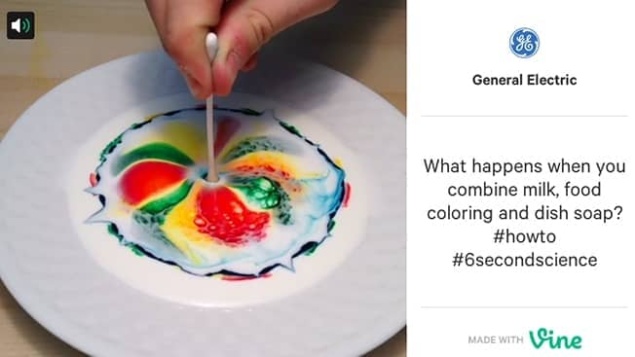
This one’s a bit older than the others (launched in 2013), but still one of the greatest social media campaign examples. It shows how to make use of user-generated content to promote a strong brand message without breaking the bank.
Seeking to generate some enthusiasm for science and establish itself as a force of innovation, General Electric asked followers to create 6 second videos of the coolest science experiments they could think of. The best videos were then posted on the company’s official account and collected in a separate Tumblr page.
The sense of guided creativity was behind the social media campaign’s success, officially acknowledged with an award at the 2014 Cannes Lions advertising competition.
What’s great about it? Encouraging creative audience participation and positioning the brand as a driver of innovation.
20. Daniel Wellington: #WheresWellington
While reposting user-generated content is nothing new for Daniel Wellington – a Swedish brand specialized in selling quality watches to a young demographic – the #WheresWellington social media campaign threw gamification into the mix, generating a high rate of engagement.
The campaign was inspired by the classic picture book Where’s Wally. Only in this case people had to guess the location of a picture, rather than a specific character. The pictures themselves were volunteered by brand-loyal Instagram users, all sporting their favourite Daniel Wellington gear in some of the most beautiful spots around the world.
This campaign goes to show that sprucing up regular social media content by adding a creative and/or interactive element can make a huge difference in terms of organic reach and engagement. Scrolling through an endless feed of pictures of watches against a white background is boring. But engaging in a guessing game is quite fun, a fact which explains the flood of comments, shares, and likes on the company’s social media.
What’s great about it? Taking user-generated content a step further with gamification, which builds trust and social proof without requiring a big social media marketing budget.
FAQ
What is a social media campaign?
A social media campaign is a series of coordinated activities designed to achieve a specific goal (e.g., drive website traffic, raise brand awareness, gain followers, promote a product/service, etc.) over a set period of time.rnrnSocial media campaigns – deployed using one or more social media channels – usually have trackable outcomes that enable marketing specialists to adjust in real time and gauge success once the campaign is over.
What are the benefits of social media campaigns?
In today’s competitive environment, social media campaigns are the cornerstone of most advertising/marketing efforts.rnrnGiven the popularity of platforms like Facebook and Instagram, social media marketing allows businesses to reach massive audiences selected using sophisticated targeting.
How to make a social media campaign?
To be successful on social media, you’ll first need to set a clearly defined, measurable goal and conduct extensive target audience research to get an idea how best to reach your prospective customers.rnrnThe next step will likely be a close examination of competition. This is usually done by identifying the keywords associated with your industry and finding out which brands are ranking for them on search engines.rnrnYou should also look up your competitors on social media, as brands that rank for keywords on, e.g., Google aren’t necessarily active on every social media platform or on social media in general. Gather as much information about your competitors by scouring their “socials”.rnrnThis should give you some indication of your strengths and weaknesses, points where your audience is underserved, and hopefully some inspiration for your own campaign.rnrnAlso, make sure to set up a social media posting calendar specifying what should be posted when and on which platform throughout the campaign.rnrnLastly, track your progress, noticing what works and what doesn’t, and adjust accordingly.









